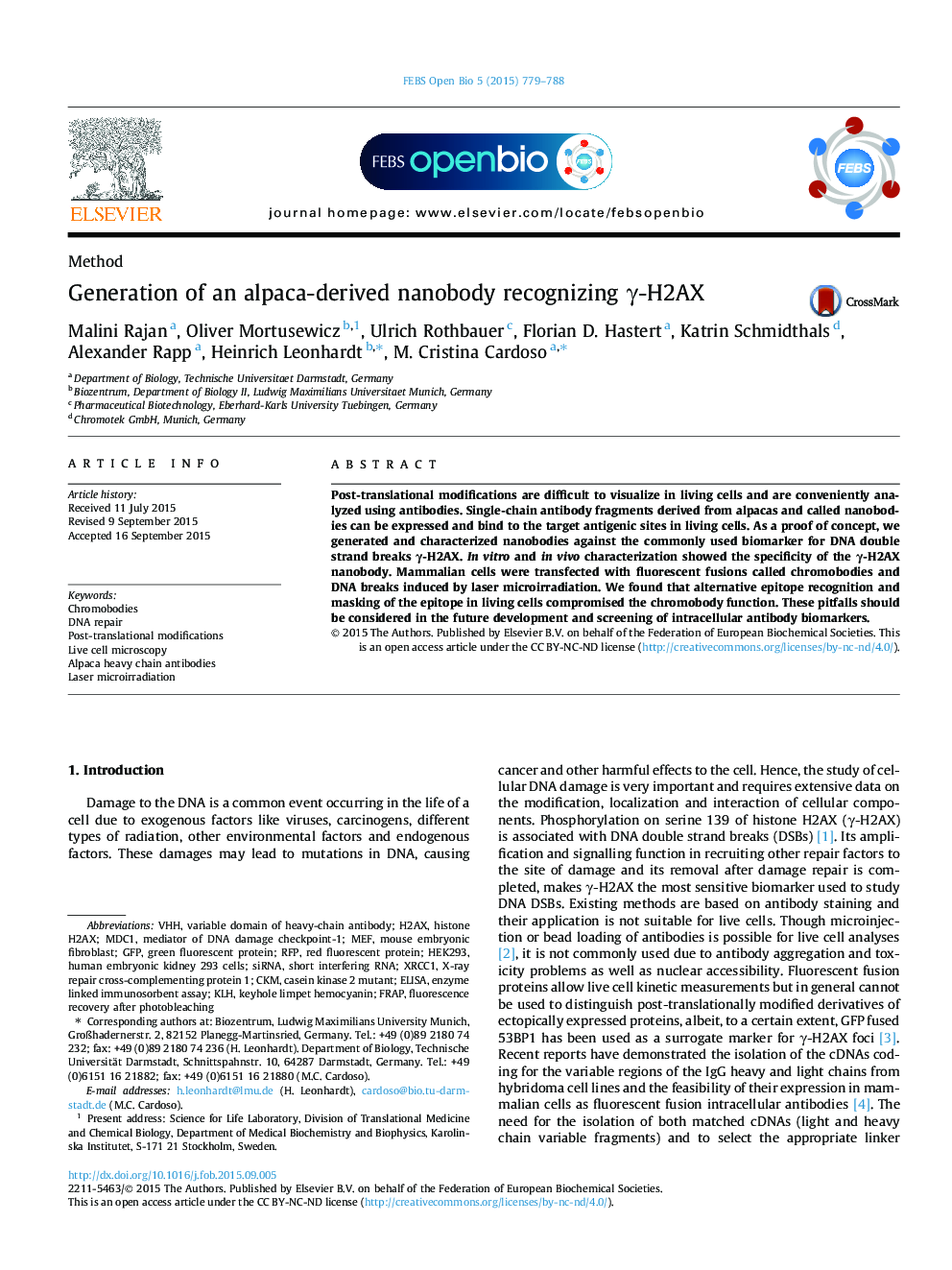| Article ID | Journal | Published Year | Pages | File Type |
|---|---|---|---|---|
| 1981644 | FEBS Open Bio | 2015 | 10 Pages |
•An alpaca-derived γ-H2AX nanobody was generated.•γ-H2AX chromobody was able to bind and precipitate phosphorylated H2AX peptide.•γ-H2AX chromobody could be produced in bacterial as well as mammalian cells.•Alternative epitope recognition by γ-H2AX chromobody was induced by ectopic XRCC1.•Accessibility of γ-H2AX chromobody was hindered by MDC1 masking in vivo.
Post-translational modifications are difficult to visualize in living cells and are conveniently analyzed using antibodies. Single-chain antibody fragments derived from alpacas and called nanobodies can be expressed and bind to the target antigenic sites in living cells. As a proof of concept, we generated and characterized nanobodies against the commonly used biomarker for DNA double strand breaks γ-H2AX. In vitro and in vivo characterization showed the specificity of the γ-H2AX nanobody. Mammalian cells were transfected with fluorescent fusions called chromobodies and DNA breaks induced by laser microirradiation. We found that alternative epitope recognition and masking of the epitope in living cells compromised the chromobody function. These pitfalls should be considered in the future development and screening of intracellular antibody biomarkers.
